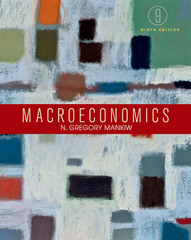Question
2. A monoplist has a constant marginal cost of production of $1 and a fixed cost of $10, and faces an inverse demand curve of
2. A monoplist has a constant marginal cost of production of $1 and a fixed cost of $10, and faces an inverse demand curve of p = 15 Q. Draw the firm's MC, AVC, and AC curves. Draw the demand curve and show the profit-maximizing quantity and price. Indicate the profit as an area on your diagram. Show the deadweight loss.
3. Novo Nordisk has a patent on a new drug, which gives it a monopoly on selling that drug. Novo Nordisk has two factories available that it can use to manufacture the new drug. Both facilities are already constructed and ready to start producing, and neither facility can be used for any other purpose. Novo Nordisk's total output of the drug is the sum of the amount it produces in each factory: Q = Q1 + Q2. The marginal cost of producing the drug in factory one is MC1(Q1) and the marginal cost of producing the drug in factory two is MC2(Q2). Show the optimal values of Q, Q1, and Q2 both graphically and mathematically.
4. A government regulator implements a rule that does not allow a monopolist to charge a price above p. If p is lower than the profit-maximizing monopoly price and higher than the competitive price (that is, the price where marginal cost meets the demand curve), how do output and welfare compare to the monopoly pricing outcome? Illustrate your answer with a diagram.
5. Providing high speed fiber optic internet service is a natural monopoly industry, due to the huge fixed costs of installing long-distance fiber optic cables. Assume that the fixed cost of building the cable network for rural New York is $100 million dollars. The variable cost of connecting a single household to the network is $250, a number which is known by everyone. The market demand curve for fiber optic internet service in rural New York is q(p) = 4, 000, 000 8, 000p. The government allows a single firm to provide service and regulates it with marginal cost price regulation.
a. How large of a subsidy must the government offer to ensure that the natural monoply earns exactly zero profit?
b. Calculate the total surplus in this market Now assume the fixed cost of building the network is $1 billion
c. What subsidy is required now for the firm to earn zero profits? Does the provision of fiber optic internet make people in rural New York better off? What would a monopolist do in the absence of any regulation?
d. Thinking about the expansion of rural broadband currently ongoing in the US, provide at least one factor this analysis misses that might undervalue rural broadband.
6. William Baumol (a fantastic environmental economist) proposed a theory of firm behavior about sales maximization, as opposed to profit maximization. To quote, "The sales maximisation goal says that managers of firms seek to maximise their sales revenue subject to the constraint of earning a satisfactory profits." Suppose that, as economists, our theory asserts that a firm's maximization problem is to maximize revenues, subject to earning positive profit. Are there any firms in the real world that this behavior explains better? Why does it apply to those firms? Are there any industries where it does not apply? What would determine if it should be followed as a goal or not?
Step by Step Solution
There are 3 Steps involved in it
Step: 1

Get Instant Access to Expert-Tailored Solutions
See step-by-step solutions with expert insights and AI powered tools for academic success
Step: 2

Step: 3

Ace Your Homework with AI
Get the answers you need in no time with our AI-driven, step-by-step assistance
Get Started


